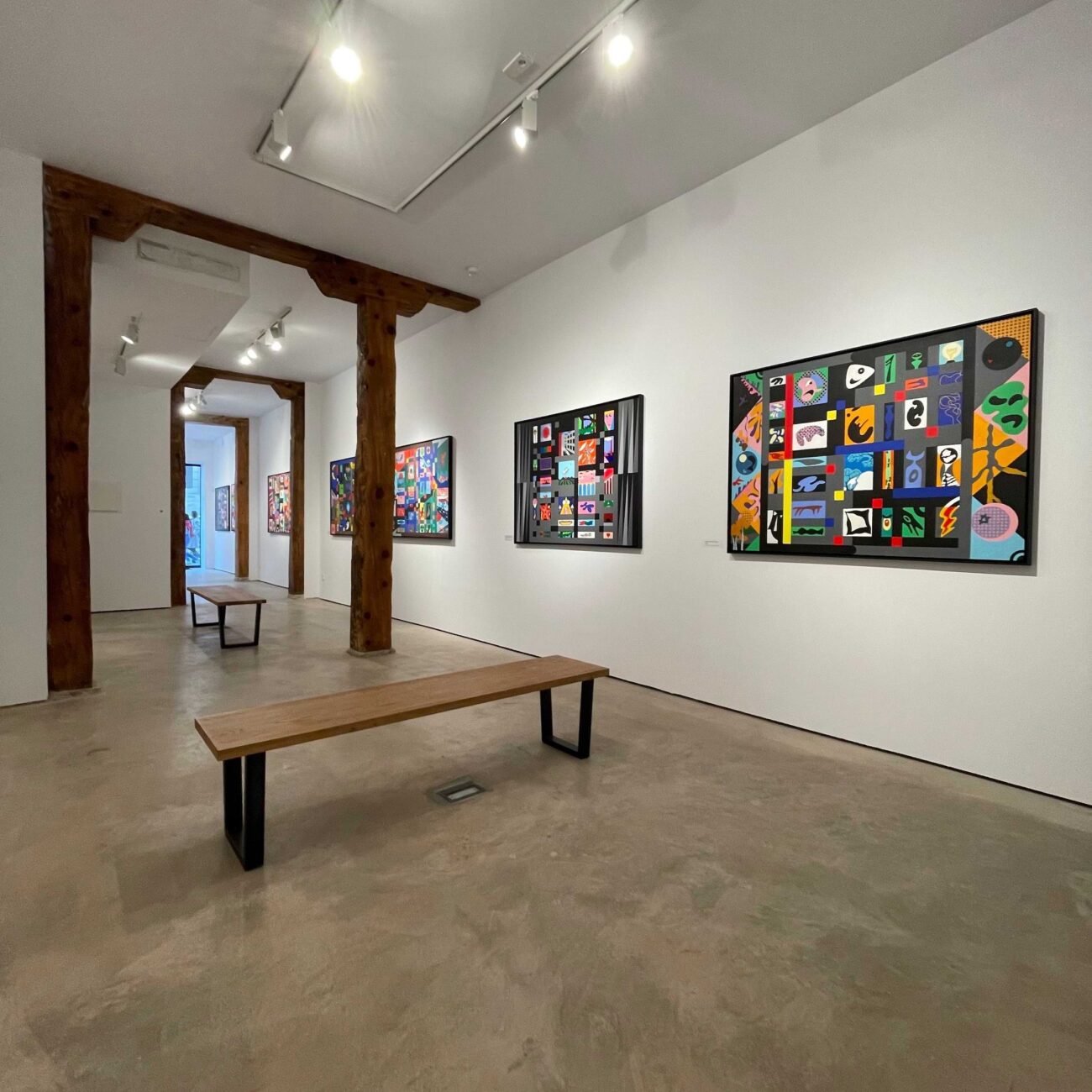Zapping

Location and Working Hours
Bárbara de Braganza 9, Madrid. Open daily 11:00-19:00 Monday and Sunday ClosedCurators
Rodrigo GalecioZapping: Rodrigo Galecio
Imagine a machine that would allow us to access the image files in our memories, everything we have absorbed in our lifetimes, and that we could then ask that machine for a visual representation of those files. Rodrigo Galecio has hacked that improbable machine to build this hallucinatory series of works. Born in the 1970s, this Chilean artist immersed himself in his memory to explore the images that populate it, and discovered amazing relationships amongst them: the geometric pattern of a Mapuche poncho hanging in his parents’ home shared the same file in his memory as the pixelated ship of the videogame Space Invaders, and a pack of Camel cigarettes was associated with an AK-47 rifle. “We have been living in an era – a culture – of images,” Galecio concludes, “and we no longer think just in words, but also in images.” As if when confronted with Heidegger’s famous quote that “language is the house of Being,” Galecio retorts, “and so are icons!” Galecio has replicated the mechanical loom technique invented by Joseph Marie Jacquard in the early 19th century to create a visual representation of his memory’s image files. Galecio inserts the images that he downloads from each file in his memory into the empty spaces of a grid, a matrix. The grids, which come from his previous works with geometric abstraction, have been organized thematically. Thus, if Galecio seeks the image file of Classic Greece in his mental processor, he finds that this is where Pegasus, Zeus’ winged horse, dwells. However, it is not just any Pegasus, but the one from the Mobil oil logotype, which in his memory has been stored in the same file as Doric and Ionic columns. Relations between icons are given by the structure the grids create (rhizomatic, like potato roots), so we can read each work as if it were the vignette of a comic that has abandoned linearity, inviting the spectator to follow the syntax of zapping (as when we change channels with a remote control). “It doesn’t matter how much a person has thought about the relationship between one image and another,” the Argentine writer Beatriz Sarlo says, “zapping has the capacity to break that relationship and install a new one.” These works lack a center or direction, which forces spectators to establish, as if in a game, their own path from one image to the next.
Galecio includes an avatar of himself in each grid, his two-dimensional alter ego: Mr. Flat, a triangular face, a cubist synthesis cross-dressing as a comic character, as if one of the young ladies of Avignon were invited to an episode of SpongeBob SquarePants. The omnipresence of Mr. Flat, whose appearance mutates according to the icons around him, is shared by another icon that is repeated in all the works: a skull, a symbolic representation of death, Mr. Flat’s game over.
These works have the coherence of dreams and are reminiscent of the tapestries, with intricate geometric designs, that the Shipibo indigenous tribe of the Peruvian jungle would embroider to represent the visions they had with ayahuasca. In this case, it is as if the merged spirits of Piet Mondrian, Roy Lichtenstein, and Bugs Bunny had participated in one of these ceremonies and then created a tapestry of their visions. Hybridization is absolute: in these visual representations of Galecio’s memory Joaquín Torres García’s Latin American constructivism cohabitates with pop art; pre-Columbian textiles with cartoons; suprematism with videogames. However, despite the radical hybridization, each of these works has an internal coherence; nothing in them is there by chance; each element is governed by mysterious relationships that, every time we stop to observe them, reveal to us an unlimited possibility of readings.





